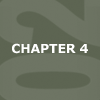


 |
 |
 |
|
ACTIVE COMPONENT OFFICERS The commissioned officer corps is the senior leadership and management of the Armed Forces. This chapter presents a view of the demographic and social characteristics of the FY 2002 Active Component commissioned officer corps, including separate information regarding newly commissioned officers (i.e., those officers entering the corps for the first time, also known as officer accessions).[footnote 1] Also highlighted are longitudinal changes among officers. Figure 4.1 illustrates the trend in Active Component officer strength by Service since 1973. Supporting data are provided in Appendix Table D-25.
These data depict two drawdowns and one buildup in the Active Component officer corps. The changes in military strength can be attributed, at least partially, to changes in the world situation. The first decline, in the 1973 to 1979 period, occurred during the demobilization following the end of the Vietnam Conflict. The defense buildup of the 1980s was generated by the escalation of the Cold War, and the second drawdown resulted from the fall of communism and the end of the Cold War. FY 2002 saw a reversal in the trend of a smaller Active Component officer corps, and the first increase in the number of officers since 1986. The overall number of individuals commissioned by the Services increased approximately 22 percent in FY 2002, with 21,518 newly commissioned officers. (Figure 4.2). This level represents the highest number of accessions since FY 1989.
[Footnote 1] Data are for commissioned officers; warrant officers are excluded. A brief sketch of warrant officers is presented at the end of this chapter. [back to paragraph] |
|
|